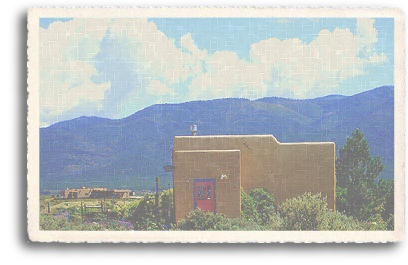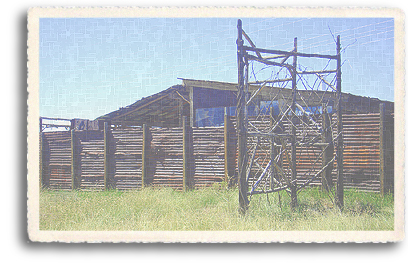 |
||
The Historic Adobe Architecture of Taos, New Mexico Today, many of the centuries-old structures in Taos and the surrounding area are still standing. Considering that the construction material used in these buildings is vulnerable to summer rains and winter snows, it speaks volumes for the long-lasting architectural miracle called adobe. Taos is also home to a large number of solar and other types of self-sustaining structures and, in fact, has been called the Solar Capital of the planet.  Basic Adobe Structures This somewhat modest adobe structure (pictured right) is part of the new construction taking place north of Taos. Yet, it is an example of Southwestern earth-based architecture which dates back to the 17th century. Ancient Indians used adobe–a mixture of sand, soil, straw and water–to build their villages. Spanish settlers were familiar with the material from use in their homeland and readily adopted it here. It was ideal for building in an area that had few large hardwood trees for lumber. The Spanish added refinements, making the adobe into bricks and creating the distinctive curved corner fireplaces that can heat an entire room. Adobe Architectural Details The earliest true adobe homes consisted of a few small rooms with the widths being determined by the length of the vigas used as ceiling beams. Over the vigas, latillas (cedar poles) were laid and flat earthen roofs topped it off. Canales were a crucial feature of adobe construction as they directed water through a parapet off the rooftop. Poorly maintained or located canales resulted in rapid destruction of the fragile sun-baked adobe bricks. Original adobe walls were very thick, often three to four feet deep, with few windows in order to keep out cold and heat.  Variations on the Adobe Theme Today’s modern adobe-style homes are built to withstand the effects of rain and weather, but still incorporate many of the original design elements of true adobe homes (with the exception of very thick walls). A cement and plaster mixture is hand troweled over a frame structure, which is insulated and covered with wire mesh before the plaster is applied. Canales are still used to drain water from the rooftops, which are often flat. Over the last few decades imaginative architects and home builders have imbued traditional adobe style architecture with creative alterations that are not simply new and fresh, but occasionally truly mind-boggling. Alternative Building Materials  Using alternative building materials for houses has been a common practice in the Taos region for several decades. In the construction of Earthship homes materials such as old tires and aluminum cans play an important part in the structure and design. Passive solar houses are commonly made of pumace stone to mimic the properties of the original adobe bricks. Other unorthodox materials are also used. For example, pictured right is a residential home made completely of metal roofing and other such materials. The unique, abstract design and style provides a kind of modern-day fortress for the the home owner, while giving the landscape another bite of creativity that is so commonly found in the Taos area. Using alternative building materials for houses has been a common practice in the Taos region for several decades. In the construction of Earthship homes materials such as old tires and aluminum cans play an important part in the structure and design. Passive solar houses are commonly made of pumace stone to mimic the properties of the original adobe bricks. Other unorthodox materials are also used. For example, pictured right is a residential home made completely of metal roofing and other such materials. The unique, abstract design and style provides a kind of modern-day fortress for the the home owner, while giving the landscape another bite of creativity that is so commonly found in the Taos area. |
||
Home | Food | Lodging | Merchants | Services | Real Estate | Art & Galleries | Entertainment | Recreation Ski Areas | Mind-Body-Spirit | Taos Information | Local Color | Taos Pueblo | High Road to Taos | Taos Plaza | Ranchos de Taos Scenic Beauty | Day Trips | Chili | Special Events | Taos History | Multicultures | Museums | The Enchanted Circle The Wild West | Taos Art Colony | Plants & Wildlife | Counterculture | Turquoise | Architecture | Features | About Us | Get Listed! Taos Unlimited Trading Post | Photo of the Week | Link of the Month | Taos Webcams | Taos Weather | Testimonials | Guestbook Taos A to Z | Movie Locations | Sitemap | Taos Unlimited Blog | Aimee & Jean's Story Blog | Contact Us | Santa Fe Unlimited |
||